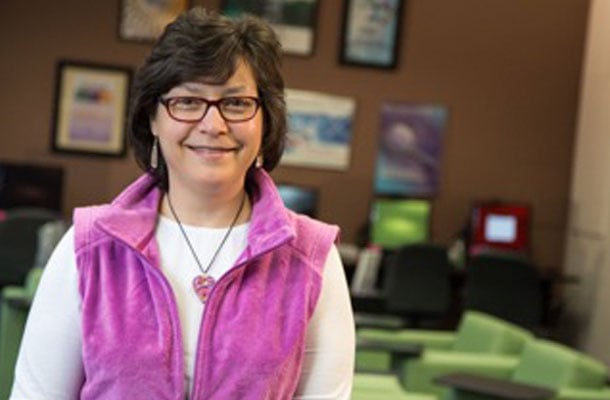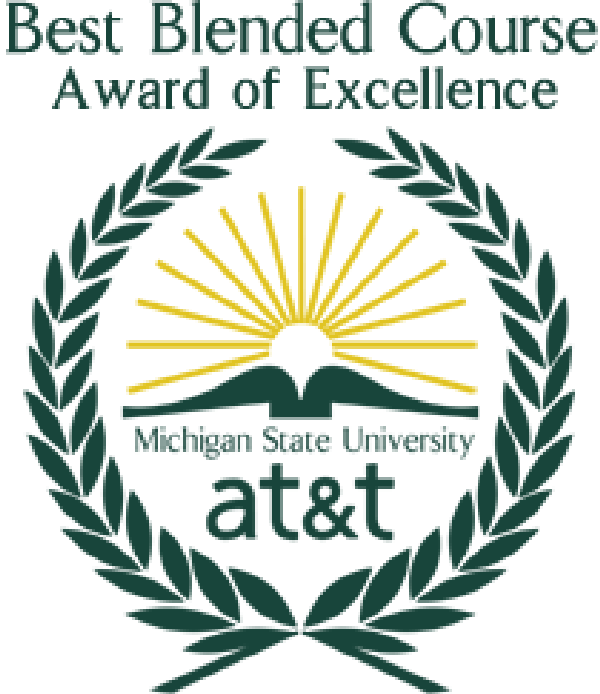BLD 434 is a junior-level course in Clinical Immunology. The course is required for students in the Biomedical Laboratory Science and Clinical Laboratory Science majors in the Biomedical Laboratory Diagnostics (BLD) Program and is available as a selective or elective for others. Within the BLD Program, the course is a prerequisite to BLD 435 and two new courses, BLD 446 and BLD 447. The course topics include: all of the cells, tissues and molecules that compose the human immune system; how these cells cooperate to fight infectious disease; how the immune system may err leading to allergic and autoimmune diseases; and how infectious disease and autoimmune diseases are detected, diagnosed, monitored and treated.
BLD 434 has been taught in a flipped format since FS12 and uses D2L heavily. Students use D2L to view recorded closed-captioned lectures prior to class. Each lecture incorporates a “talking head” of the professor along with the PowerPoint slides. Students can purchase a printed course pack to facilitate note-taking and to obtain hierarchical relationships between topics in the PowerPoint-based lectures. Students are asked to focus on assigned learning objectives when watching the lecture recordings, and individually prepare the best written response to each objective prior to class. They then meet in assigned teams of 6 students in each class session to discuss the learning objectives, complete a cell model exercise, or work through patient case studies. Most class sessions have review iClicker questions at the beginning of class and end with iClicker questions over the new content. Students are prompted to discuss any iClicker questions in which <60% of students answer correctly, and given the opportunity to answer the question again. Examinations are administered in regularly scheduled class sessions.
When BLD 434 was first taught in FS03 (then MT 434) the course enrollment was 68 and the course was taught only in fall semester. Enrollment has since expanded dramatically, with current average enrollment of 190-200 in FS, 140-150 in SS, and approximately 20 in summer. Hoag wanted to maintain the case studies she had introduced in FS03 as part of her Lilly Fellows project, but could not maintain manual grading of written team answers with this high enrollment. In addition, she had a significant percentage of pre-professional and pre-medical students who had to miss class for medical school or graduate school interviews, and didn’t want to miss course content. This led to recording lectures in class and posting to the learning management system. Experience recording lectures eventually led to fully recorded lectures and a fully flipped course in FS12. SheI instituted the use of iClickers at this time as well to ease grading of patient case studies and provide individual student accountability on case studies.
Hoag has more recently expanded the use of iClickers to the beginning and end of class for review questions that provide students frequent recall practice. Another benefit of iClickers is that they can be used as incentive for students to attend class regularly and to arrive on time, especially if iClicker performance is used as a portion of the student grade in the course. Thus, this increases time on task for some students.
Finally, since instituting the flipped format with recorded closed-captioned lectures, Hoag has had students report that they appreciate and utilized the closed-captioning. It is especially important to aid students who have hearing impairment or for who English is not their first language, but it is also used by many other students who would not be expected to have a language barrier. This might be because Immunology has a scientific language quite different from conversational English, as well as being rife with abbreviations that are unique to Immunology. Students have also reported that the recorded lectures allow them the freedom to work ahead if they have a particularly busy week coming up, or review sections of a recording over again on a topic they might not have understood. All recorded lecture topics are closed-captioned and can be streamed from D2L with or without closed captioning turned on. In addition, the syllabus provided in D2L is accessible, following a standard format provided by MSU.
Technologies included in this course:
- Desire2Learn (https://d2l.msu.edu)
- iClickers (https://www.iclicker.com)
- Camtasia (https://www.techsmith.com/camtasia.html)
- CATME (http://info.catme.org/)
Team Members:
Aimee Stewart, Curriculum Assistant, Biomedical Laboratory Diagnostics
Allan McDaniel, Instructional Media Coordinator, Biomedical Laboratory Diagnostics

